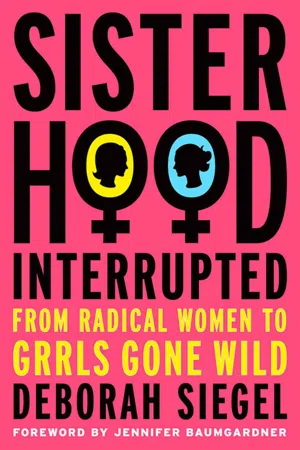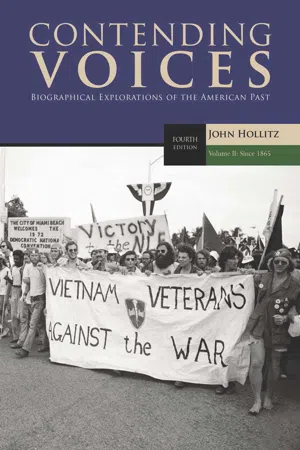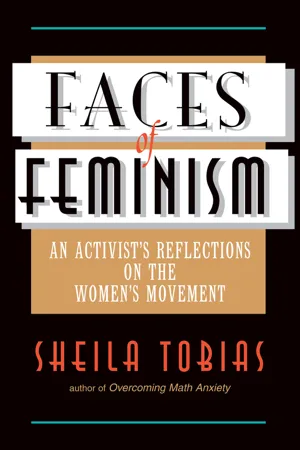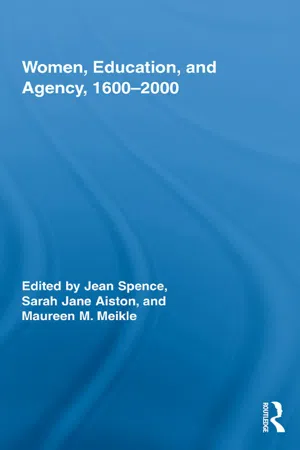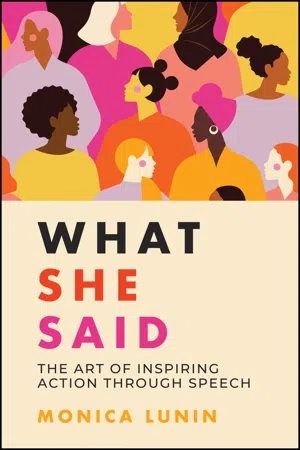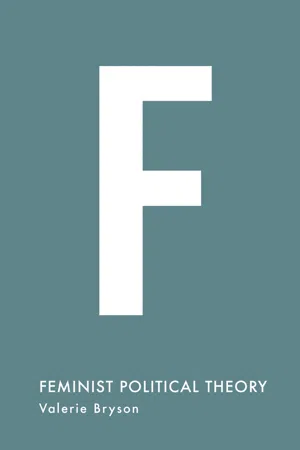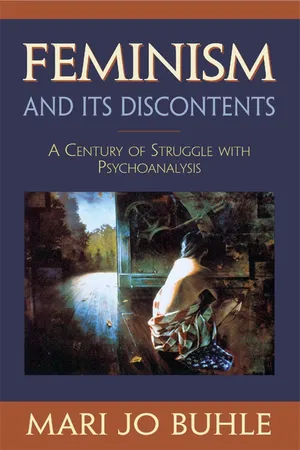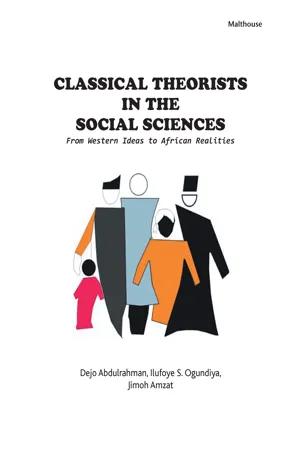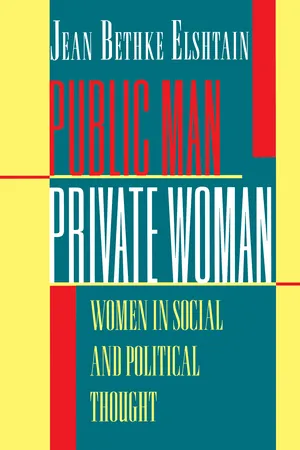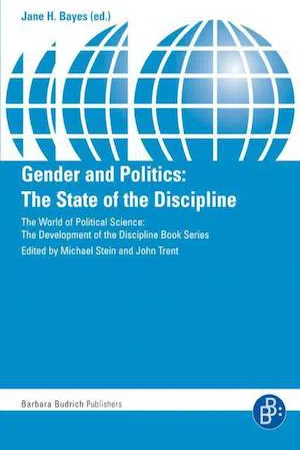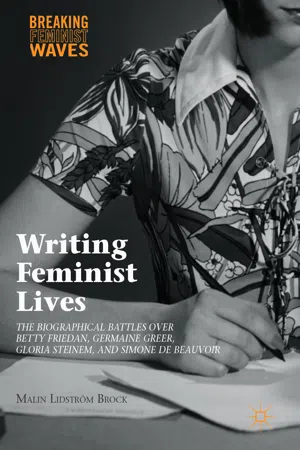Politics & International Relations
Betty Friedan
Betty Friedan was an American feminist and writer known for her influential book "The Feminine Mystique," which sparked the second-wave feminist movement in the United States. She co-founded the National Organization for Women (NOW) and advocated for women's rights and gender equality. Friedan's work challenged traditional gender roles and played a significant role in shaping feminist discourse and activism.
Written by Perlego with AI-assistance
Related key terms
1 of 5
12 Key excerpts on "Betty Friedan"
- eBook - PDF
Sisterhood, Interrupted
From Radical Women to Grrls Gone Wild
- D. Siegel(Author)
- 2007(Publication Date)
- Palgrave Macmillan(Publisher)
The history of Friedan’s life has been written and rewritten; the significance of The Feminine Mystique is well known. And yet, in all the commentary around her death in 2006, one important legacy was completely ignored. In recent decades, younger gen- erations of women have been replaying—without necessarily realizing it—Friedan’s battle for feminism’s soul. Although younger women may think themselves far beyond the plight of their movement mothers, in cer- tain ways, as we’ll see in part II, they are still very much in the thick of debates similar to that which took place between Dunbar and Friedan on a 1968 green room floor. THE BATTLE OF BETTY 75 THE MAKING OF Betty Friedan What drove a housewife from Peoria to midwife—and mainstream—a so- cial movement? In contrast to younger radical women, whose feminism grew out of their participation in the civil rights and student movements of the 1960s, Betty Friedan came to both feminism and politics from a more practical and unassuming place. A prominent member of the older, more liberal (or “reformist”) women’s rights–oriented branch of the move- ment that sought to work within the existing political structure, rather than overthrow it, Friedan’s brand of feminism was deeply informed by the liberal optimism of the early 1960s that characterized Kennedy’s New Frontier and Johnson’s Great Society. Her passion for social justice and her skills were profoundly influenced and shaped by her involvement in the labor movement of the 1940s as well. 9 Like many of the women who would eventually play a central role in the establishment of the liberal, rather than radical, arm of the women’s movement, Friedan grew up in an era of democratic progressivism. The daughter of first- and second-generation Jewish Americans, Friedan devel- oped early on a commitment to issues of social justice and a profound awareness of the devastating effects of anti-Semitism. - eBook - PDF
- John Hollitz(Author)
- 2016(Publication Date)
- Cengage Learning EMEA(Publisher)
13 From Mystique to Militance: Betty Friedan and Gloria Steinem W hen Betty Friedan strode into the packed New York hotel conference room, she needed no introduction. Friedan was the founder of the National Organization for Women (NOW) and the author of The Feminine Mystique , the 1963 best seller that ana-lyzed the widespread discontent of American housewives. In fact, the waiting reporters had often called her the mother of the modern women ’ s movement. All that, though, was in the past. On this day in July 1972, the press was interested only in what Friedan had to say about feminist Gloria Steinem, who had just published the first regular issue of Ms. magazine and spoken at the Democratic National Convention. For several years, Friedan had listened to Steinem ’ s attacks on the family, on men, and on women who wanted to make husbands equal partners in marriage. Now she was fed up. Women were not “ forever wronged by men, ” Friedan declared. Feminists like Steinem who in-sisted otherwise were “ female chauvinist boors ” who threatened to corrupt the women ’ s movement and create a backlash against it. As she looked out at the crush of reporters, Friedan knew how many of them would interpret this attack. The often-abrasive Friedan, they would say, was jealous because Steinem had grabbed the media spotlight from her. Young, chic, and glamorous, Steinem had once worked as a Playboy Bunny to write an exposé of the Playboy Club ’ s treatment of female employees. In just the past year, her smiling face had appeared on the covers of Newsweek and New Woman. She had even pushed aside the movie stars and models who frequently graced McCall ’ s cover. Steinem was “ the most visible of the activists, ” the magazine had announced in early 1972 as it named her its “ Woman of the Year. ” She looked, McCall ’ s proclaimed, “ like a life-size, counterculture Barbie Doll. ” Friedan knew she never could have landed a job as a Playboy Bunny. - eBook - ePub
Faces Of Feminism
An Activist's Reflections On The Women's Movement
- Sheila Tobias(Author)
- 2018(Publication Date)
- Routledge(Publisher)
Bringing long hours of scholarship and a highly intuitive sensibility to the reality of the life of "privileged" American woman, Betty Friedan reported in her book that women in the 1950s were suffering a problem— the "problem that had no name," she called it—that they could neither identify nor deal with. How was it possible, she asked herself, that women were complicit in their own disempowerment? Where did this new "feminine ideal" come from, and who had a vested interest in perpetuating it? These questions brought her to the New York Public Library and to the field, where she conducted interviews. Once she had answers to her satisfaction, she began promoting her ideas. And the consequences were enormous. A population of women that had been virtually depoliticized was made to look again at the choices it had made, this time in political terms. Her analysis became part of the dogma and one of the founding themes of the second wave, and her energy, as promoter and later cofounder and first president of the National Organization for Women, gave the movement its first victories in the legislative arena.Thus, Betty Friedan is crucial to a certain class of women who came of age in the 1950s and 1960s and not just because she wrote a book that many women read and were moved by.8 Her analysis actually changed the course of American women's history, first by identifying a phenomenon—the feminine mystique—no one had previously isolated or described, then by providing an analysis of how such a set of beliefs came into being, and finally, by giving the feminine mystique a limited place in history.I personally responded to being of the second sex by leaving the country after graduation from college. In 1963, I had just returned and was trying to figure out why I was not more successful either as a journalist or as a graduate student. For me, reading The Feminine Mystique, handed to me by my mother in summer 1963, only a month or so after Judith Saidel had discovered the book on her reading list at Wellesley, the message was loud and clear: The set of beliefs that had begun in the aftermath of World War II and held sway while I was a college student did not have to be. Betty Friedan's book would change my life, too.The Story of the Book
As is often the case with germinal thinkers, Betty Friedan did not set out to write The Feminine Mystique but simply to collect some survey data about her graduating class of 1942, which had left college in the middle of World War II. The occasion for her report was the class's fifteenth reunion. The year was 1957, and Friedan had been struggling for some years to maintain a career as a freelance writer while being married and bringing up three children. Battling what we would later call sexism in the feature-writing field, she found the women's magazines to which she was relegated unwilling to assign her articles of general interest. So when McCall's - eBook - ePub
- Jean Spence, Sarah Aiston, Maureen M. Meikle, Jean Spence, Sarah Aiston, Maureen M. Meikle(Authors)
- 2009(Publication Date)
- Routledge(Publisher)
American Women: The Report of the President’s Commission on the Status of Women was well-read at the time, but has since assumed prominence as a benchmark, the first national study of women’s concerns. In fact, many readers today imagine American Women as a much more feminist analysis than it actually is.6Although different in many ways, these two books highlight issues faced by those thinking about women in the early 1960s. Ultimately, they offer different analyses, different approaches to activism, and different solutions for women’s concerns; yet each captures the challenges and thinking of an era that found no clear answers for how to support women. In 1963, it was hardly clear whether the future would proceed along the same path, or go in the new directions Friedan was hailing.Following a brief outline of key differences and similarities in the two books, this chapter will examine each volume in turn, explicating two themes. The first is that, although a post-feminist perspective may imagine Friedan as better capturing the era, a closer examination suggests that the presidential commission actually represented a truer picture of female agency—and its limits—in 1963. Although Friedan’s bold call for personal agency and collective action eventually characterised a later era, the President’s Commission more accurately shows well-intentioned thinkers caught in the period’s delicate balancing act between women’s personal choice and public change. In the early 1960s, Friedan’s boisterous feminism proved too risky for many women, on either the private or public level. The second theme comes from an examination of the books’ treatment of women’s education, an aspect usually overlooked by scholars. Although neither volume intended itself as an exploration of education, each found there a useful tool for explaining contemporary dilemmas and offering potential solutions. - eBook - ePub
What She Said
The Art of Inspiring Action through Speech
- Monica Lunin(Author)
- 2022(Publication Date)
- Wiley(Publisher)
Once you see the trick, you will no doubt notice this technique used by litigators, politicians and agitators the world over. The technique has several benefits. Firstly, you avoid a direct attack on an actual person, which may be dangerous. Secondly, you can craft the counterargument in a way that best suits your persuasive needs. And, most importantly, you whip up the environment of contention, maybe even aggression, to best suit your purpose, style and occasion.Emmeline Pankhurst, it now seems, was not just an instrumental player in the suffragette movement on two continents, she was also an exceptional, highly skilled public speaker.Passage contains an image
I propose that the women who are doing menial chores in the offices cover their typewriters and close their notebooks, the telephone operators unplug their switchboards, the waitresses stop waiting, cleaning women stop cleaning, and everyone who is doing a job for which a man would be paid more — stop.Betty FriedanBetty Friedan
Feminist, writer and activist
B: 4 February 1921, Peoria, IL, United StatesD: 4 February 2006, Washington, D.C., United StatesCall to women's strike for equality
When: 20 March 1970Where: New York CityAudience: Members of the National Organization for Women (NOW)In August 1970, 50 years after American women were awarded the right to vote, Betty Friedan, author of the seminal feminist tome The Feminine Mystique, organised the Women's Strike for Equality to continue the fight.Friedan's initial call for the strike came a few months earlier. On 20 March 1970, Friedan was scheduled to deliver the farewell address to the fourth annual convention of NOW (the National Organization for Women). Rather than deliver the polite, reflective, congratulatory address that might be expected, Friedan used the power of the podium to rally her supporters. - eBook - ePub
- Valerie Bryson(Author)
- 2016(Publication Date)
- Bloomsbury Academic(Publisher)
In the following decades, feminism based on equal rights arguments was in abeyance (see Chapter4). However, as discussed in Chapter7, the years after the Second World War contained the seeds of the discontents that were to explode in a ‘second wave’ of mass feminist activity in the 1960s. Although this activity had a number of sources and developed rapidly in several very different directions, it began in the United States as an essentially liberal protest against the failure of that society to deliver to women the promises of independence, self-expression and fulfilment that seemed central to the ‘American dream’. By the 1960s, this kind of feminism was not usually expressed as a self-conscious political theory, but as a ‘common sense’ application of pre-existing values to women’s situation. As other feminist theories developed, a somewhat one-sided theoretical debate emerged, with critics of liberal feminism attacking positions that had never been fully articulated and perhaps at times creating and demolishing a liberal feminist ‘straw woman’ who did not really exist. However, uncovering and examining the assumptions behind campaigns and debates is central to the development of effective feminist politics, and the fact that liberal assumptions are often not consciously propounded or defended may indeed make the task more urgent. Betty Friedan and the politics of NOW The clearest and most famous expression of ‘common sense’ liberal feminism is to be found in Betty Friedan’s The Feminine Mystique (first published 1963; references to the 1986 edition). Friedan argued that, in the United States since the Second World War, earlier feminist dreams of education and independence had been displaced by an all-pervasive ‘feminine mystique’, through which women had been manipulated and persuaded into the belief that their only fulfilment lay in domesticity - eBook - PDF
Feminism and Its Discontents
A Century of Struggle with Psychoanalysis
- Mari Jo Buhle, Mari Jo BUHLE(Authors)
- 2009(Publication Date)
- Harvard University Press(Publisher)
Friedan denounced Freud, claiming that his theories had become an ‘‘all-embracing American ideology . . . [settling] everywhere, like fine volcanic ash.’’ Moreover, that ideology’s authoritative stature inhib-ited women from questioning what was in essence merely long-stand-ing prejudice hardened into dogma. ‘‘The feminine mystique, elevated by Freudian theory into a scientific religion,’’ Friedan wrote, ‘‘sounded a single, overprotective, life-restricting, future-denying note for women.’’ 3 Friedan’s acerbic critique of Freud’s ‘‘sexual solipsism’’ proved the harbinger of a full-scale assault on the psychoanalytic legacy. The National Organization for Women, which Friedan had helped to found in 1966, explicitly rejected marriage and motherhood as an exclusive vocation and campaigned vigorously to expand women’s employment opportunities and civil rights. Equality became the watchword. The very idea of highly differentiated sex roles, the pre-scriptions and proscriptions of authors ranging from Wylie and Farn-ham to Erikson and Parsons, went out the window. Meanwhile the mushrooming women’s liberation movement spread the message among millions of college-age women. By 1967 consciousness-raising (CR) groups had begun to form across the country. The year 1968, Feminists versus Freud 209 which marked social upheaval around the globe, saw hundreds of clamorous protesters at the nationally televised Miss America beauty pageant in Atlantic City. This action vividly illustrated women’s deter-mination to break, as one radical agitator put it, ‘‘the bond of woman as a biologically and sexually defined creature.’’ 4 Second-wave activists revived and soon eclipsed the feminism of their distant predecessors. - eBook - PDF
Classical Theorists in the Social Scienc
From Western Ideas to African Realities
- Dejo Abdulrahman(Author)
- 2023(Publication Date)
- Malthouse Press(Publisher)
In 1868, they began publishing a women's rights newspaper called The Revolution. In 1869, they founded the National Woman Suffrage Association which later merged with the rival American Woman Suffrage Association to form the National American Woman Suffrage Association. Next is the Second-wave feminism (1960s – 1990s) which, based on phenomenology and psychoanalysis, aimed at identifying and eliminating sources of sexism and gender oppression. It was associated with the ideas and actions of women’s lib or women’s liberation movement during the time of civil unrest and social upheaval for homosexuals, blacks, immigrants between the 1960s and 1970s. Their major ideas and goals were Sexual and reproductive rights; job and harassment protections for women; challenge of the domestic/traditional role for women; access to education and Equal Rights Amendment. They clamoured for legal and social equality for women. The second wave extended the fight beyond political rights to education, work and the home. For instance, in the book The Feminine Mystique (1963) Betty Freidan argues that women were unhappy because of the feminine mystique. The book became a key text in the sexual revolution of the 1960s. Friedan was aware of media’s effect on the oppression of women. She argued that traditional gender roles stifle women’s development and treats gender roles as inherently dehumanizing. To her, women’s magazines continued to „insist that women can know fulfilment only at the moment of giving birth to a child’ (Friedan, 1963:55), controlling women’s hopes for the future and confining her dreams to those that concerned women as her husband’s wife and children’s mother. She noted this as a damaging ideal of femininity which restricted women to the role of housewife and mother (“The Happy Housewife”) by giving up on work and education. - eBook - PDF
Gloria Steinem
A Life in American History
- William H. Pruden III(Author)
- 2021(Publication Date)
- ABC-CLIO(Publisher)
In fact, while Friedan’s Feminine Mystique had begun the discussion and awakened people’s consciousness about the role of women in society, Gloria’s arrival on the scene shifted the debate. Rightly or wrongly, she was seen as offering a more hard-line approach, this despite the fact that her vision had feminism as a part of a broader humanitarian movement. Friedan’s middle-class women were soon overshadowed by a more strident group. Second-wave feminism quickly morphed into the women’s libera- tion movement, with Gloria offering—or so it was said by some commen- tators—a more strident message. Gloria made clear from the beginning that not only was she a latecomer to the effort but that she was about choices in a movement that was part of an even broader humanism effort. However, the media found her quips—for example, “a woman needs a man like a fish needs a bicycle”—far more newsworthy than her extended dis- cussions on the importance of a broadly inclusive effort. That reality, cou- pled with a media presence and style that were the envy of every public relations flack in the country, meant that inevitably the battle lines—or at least the parameters for a newsworthy conflict—were drawn (Stern 1997). While on the one hand, Gloria’s personal life was central to her appeal, giving lie to those who claimed that the only people who were feminists were the ugly losers who could not get a man, aspects of her personal life were seen by some as intimidating. Many applauded the way, as one woman expressed it, Gloria was someone who could play the game, could win the game, and then could say the hell with the game. And yet how Gloria seemed to play the game was sometimes overbearing to many. Her big-tent approach, one that included lesbians, single mothers, and those who opted 92 Gloria Steinem not to marry, was an ideological basis for some of her differences with Betty Friedan and the more middle-class approach that was at the root of The Feminine Mystique. - eBook - PDF
Public Man, Private Woman
Women in Social and Political Thought - Second Edition
- Jean Bethke Elshtain(Author)
- 2020(Publication Date)
- Princeton University Press(Publisher)
By seeing such proposals as unalloyed goods and remedies, reflecting or conducing towards every woman's true needs even though many women from the start said they wanted none of it, Friedan's liberal feminist movement provides evidence of the pervasive effects of one of the most powerful mystiques of all: that of class. What has changed in Friedan's view? She called several years ago for feminists to move from the Old 4 No' to the New 'Yes.' Yet her new Yes is suspiciously like the old No with one exception: she now insists feminists must focus on the family rather than flee from it. In an article, Feminism Takes a New Turn, Friedan recalls the halcyon days of 1970 when thousands of women marched down Fifth Avenue in the first nationwide 101 Friedan, Feminine Mystique, pp. 370-371. 254 • Feminism's Search for Politics women's strike for equality carrying various banners, including 24 Hour Child Care. Their agenda then, she muses, was so simple and straightforward, or seemed so. To see the problem with that first agenda as its simplicity is to miss the boat: Friedan's rethinking fails to reflect on the presumptions imbedded in those early demands. Friedan goes on to insist that now, ten years later, our daugh-ters take their own personhood and equality for granted. 102 I shall focus on this claim for a moment. Friedan constantly but-tresses her points from personal experience, and I shall mine. I am the mother of four children including three teen-age daughters, daughters of a professional and feminist mother. None of them takes her identity, or what Friedan calls her personhood, for granted. I find the claim that they do, or should, troubling and condescending to all young women. - Jane Bayes(Author)
- 2012(Publication Date)
- Verlag Barbara Budrich(Publisher)
security studies and interna-tional political economy, and probed feminist interventions. There are other important areas where internationally oriented feminist scholars have made important contributions. In particular, there is a proliferating literature on de-mocratization both at the state level and at the international level. Literatures on global civil society, the role of international advocacy networks and of women’s movements fit into this body of literature, as do writings on femi-nist strategy. They are a central part of contemporary feminist International Relations and my lack of attention to these writings here should not distract from their centrality to the field ( e.g. Jaquette 2003; Naples and Desai 2002; Molyneux and Razavi 2002; Braig and Wölte 2002; Liebowitz 2002; Eschle 2001; Kelly et al. 2001; Ackerly 2000). The purpose of this essay is to document the considerable richness of feminist scholarship in International Relations. It is a self-confident scholar-ship that has moved from talking at the mainstream to constituting itself as a distinct body of knowledge that the mainstream ignores at its own peril. Fem-inist analyses of masculinity, war- and peace-making provide trenchant an-swers to understanding IR’s classic question – why war? Feminist studies of women’s work in all economic sectors and in reproduction complete the par-tial picture of globalization offered by liberal economics. And feminist explo-rations of gendered, racialized, and sexed messages in economic conduct help answer questions about the causes of poverty and inequality. Feminist Inter-national Relations thus has emerged as a field of scholarship central to under-standing the pathologies of our global world. Feminist International Relations – The State of the Field 189 References Abood, Paula, 2003. “The Day the World Did Not Change.” Signs: Journal of Women in Culture and Society. 29, 2: 376-578. Ackerly, Brooke, 2000. Political Theory and Feminist Social Criticism.- eBook - ePub
Writing Feminist Lives
The Biographical Battles over Betty Friedan, Germaine Greer, Gloria Steinem, and Simone de Beauvoir
- Malin Lidström Brock(Author)
- 2017(Publication Date)
- Palgrave Macmillan(Publisher)
None of the women, however, has occupied a position of leadership in any traditional way. 9 This has left them and the movement that they ostensibly represented vulnerable to the media in which they appeared. For instance, reports in the media tended to focus on personal conflicts and scandals more often than on the women’s political views. 10 Biography, then, seems to have a central, if equivocal, place within the historicizing of the women’s movement, but this concern with individuals’ lives is of course not simply an extrinsic imposition, as the four women’s feminist writing includes autobiographical elements. This fact adds a political dimension to their life stories and an autobiographical aspect to their political writing. It is precisely against such politicized autobiography, which forms part of the women’s biographical recognition, that the three realist biographers in this chapter have positioned their narratives. The result is a conflict between autobiographical and biographical truth-claims, a conflict that must also be understood in ideological and political terms. The Unhappy American Housewife In Betty Friedan’s case, autobiographical anecdotes appear already in her feminist study, The Feminine Mystique, first published in 1963. The study was an instant bestseller and turned Friedan into a public figure in the American mind. American society, she argues in The Feminine Mystique, communicates a false female ideal to women that equates the road to personal fulfillment with marriage, childbearing and homemaking. But for women to reach their full potential as human beings, they must be given the same opportunities as men to achieve their ambitions. More precisely, Friedan advocates higher education and a professional career as paths towards women’s self-fulfillment. To emphasize some of her points, Friedan describes her own experience of living in a New York suburb
Index pages curate the most relevant extracts from our library of academic textbooks. They’ve been created using an in-house natural language model (NLM), each adding context and meaning to key research topics.
